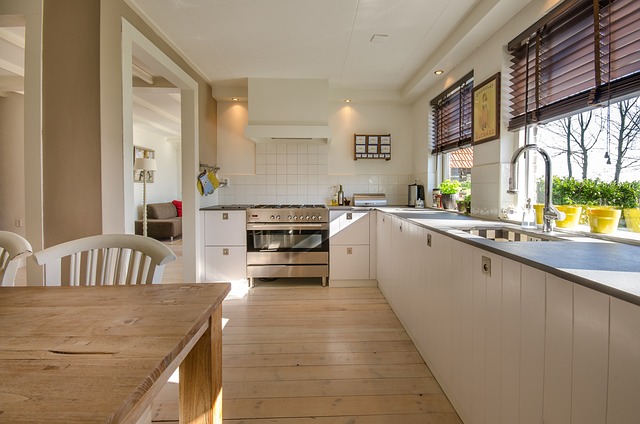Green roofing is a sustainable and aesthetically pleasing option for homeowners, offering excellent insulation, improved air quality, and effective water management. Utilizing eco-conscious materials like recycled metal, bamboo, and plant composites, these roofs reduce environmental impact, minimize waste, and enhance energy efficiency. With design flexibility ranging from extensive to intensive systems, green roofs cater to diverse tastes while providing insulation, improving air quality, and combating urban heat islands. Installation involves layering, including waterproof membranes and drainage, feasible for new constructions and retrofits with proper maintenance, ensuring longevity (over 20 years) and ecological balance.
Green roofing is a revolutionary concept transforming sustainable home design. By integrating plant life into rooftops, these systems offer environmental benefits, from mitigating urban heat islands to absorbing rainwater. This article explores the fundamentals and advantages of green roofs, delving into eco-conscious materials, design versatility, and installation considerations. Discover how embracing nature on your roof contributes to a healthier planet and enhances your living space’s beauty and value.
Understanding Green Roofing: The Basics and Benefits
Green roofing is an innovative and sustainable approach to enhancing homes, offering a range of benefits for both the structure and the environment. At its core, it involves the strategic integration of plant life into roof systems, creating a living, green space atop buildings. This concept has gained significant traction among eco-conscious homeowners and builders due to its ability to transform ordinary roofs into vibrant ecosystems.
The advantages are multifold. Green roofs provide excellent insulation, helping regulate indoor temperatures and reducing energy consumption for heating and cooling. They also act as natural filters, improving air quality by absorbing pollutants and releasing oxygen. Moreover, these roofing systems contribute to water management by slowing down rainwater runoff, allowing for better absorption and reducing the strain on municipal drainage systems. With the use of eco-conscious building materials, such as lightweight growing mediums and drought-resistant plants, green roofs can be designed to thrive in various climates while minimizing maintenance requirements.
Eco-Conscious Materials for Sustainable Roofs
When designing a sustainable home, choosing eco-conscious materials for the roof is a significant step toward reducing your environmental footprint. Options like recycled metal, bamboo shingles, and plant-based composite materials not only offer excellent durability but also minimize waste and energy consumption during production. These materials are often lightweight, making them easier to install and less stressful on structural support systems.
Moreover, incorporating eco-friendly roofing solutions contributes to the overall greenness of your home by potentially reducing the need for regular replacements, lowering carbon emissions associated with manufacturing new materials, and providing additional insulation, leading to energy efficiency gains. This aligns with the broader trend in eco-conscious building materials, where durability, sustainability, and performance are increasingly at the forefront of design considerations.
Design Options and Aesthetics for Green Roofs
Green roofs offer a unique and aesthetically pleasing way to enhance sustainable homes, with various design options catering to different preferences. From extensive systems featuring low-growing plants and sedums to intensive systems that support larger vegetation, each option presents a distinct visual appeal. Architects and homeowners can choose from a range of eco-conscious building materials for the roofing substrate, such as recycled plastics, wood fiber, or gravel, contributing to the overall environmental friendliness of the structure.
The design possibilities are further expanded with the integration of biophilic elements like vertical gardens, green walls, and diverse plant species, creating a harmonious blend of nature and modern architecture. These artistic interpretations not only elevate the visual appeal but also provide insulation, improve air quality, and mitigate the urban heat island effect, making green roofs a popular choice for those seeking both beauty and sustainability in their homes.
Installation, Maintenance, and Longevity Considerations
The installation process for green roofs varies depending on the system chosen, but it generally involves laying down a waterproof membrane and drainage layers before adding growing media and plants. This can be a complex task that requires careful planning and professional expertise, especially for larger projects. However, with the right approach, eco-conscious building materials make this an achievable feat for both new constructions and retrofits.
Maintenance is key to ensuring the longevity of a green roof. Regular watering, weeding, and fertilizing are essential, especially during the initial years. Unlike traditional roofs, green roofs require specific care to maintain their ecological balance. Proper maintenance not only keeps the plants healthy but also extends the roof’s lifespan, which can last for over 20 years with adequate care. This makes them a sustainable investment for any eco-conscious homeowner.
Green roofing offers a sustainable solution for home owners looking to minimize their environmental impact. By incorporating eco-conscious building materials and considering various design options, homeowners can create beautiful, functional spaces that enhance energy efficiency, support local ecosystems, and contribute to a greener future. With proper installation and maintenance, these roofs provide long-lasting value, making them a smart investment for any environmentally-focused home.
